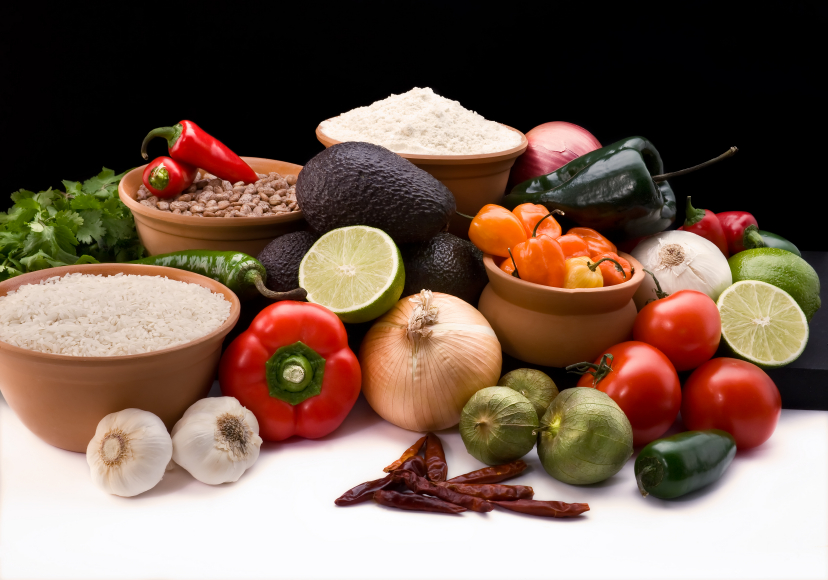We are often asked questions about acidic and alkaline foods and acidic body chemistries. This is an often-misunderstood point, so we thought we would tell you more about it in this blog post.
Measuring Acidic and Alkaline Substances
To truly get a handle on the differences between acidic or alkaline substances, we must understand how they are measured. The scale used to measure the relative acidity or alkalinity of a substance is called ‘pH’. The pH scale runs from 1 to 14; anything with a pH from 1-7 is considered acidic, substances with a pH from 7-14 is considered alkaline; a pH of 7.0 is considered neutral. pH is a logarithm-based scale; all this really means is that a seemingly small difference in pH, say from pH=1 to pH=4 represents a very large shift in acidity (in this case a substance with a pH=1 is 1000 times stronger than a substance with a pH=4). Remember, small changes in pH indicate large changes in the relative strength of compounds.
Acidic Substances
Technically speaking, acids are chemical compounds containing the element hydrogen that have the ability to supply positively charged hydrogen ions to a chemical reaction (i.e., they react by giving up or donating a hydrogen ion). Acidity is a relative term, depending upon the comparative ability to donate or accept hydrogen ions. As shown above, strong acids (pH~1) are much stronger than weak acids (pH~4-6). Most acids are characterized by a sour taste and the ability to neutralize alkaline substances.
Alkaline Substances
Alkalis (alkaline substances) are a class of chemical compounds, also called bases, which have the property of forming the hydroxide ion (depicted as OH-) in solution. Their properties are generally opposite to those of acids, and they neutralize acids, reacting with them to form salts. As with acids, the relative strength of alkaline substances varies dramatically from strong alkalis (pH~11-14) to weak alkalis (pH~8). The key point here is that alkalis (alkaline substances) neutralize acids.
The following chart shows you the pH of various substances:
|
|
Body Chemistry
The pH of healthy blood is 7.35-7.45. This means that it is slightly alkaline. This alkalinity has to be kept almost constant; even minor variations are dangerous. If the hydrogen ion concentration in the blood rises to pH 6.95, coma and death result as the heart relaxes and ceases to beat.
The major affect from an overly acidic body chemistry is depression of the central nervous system. In extreme cases when the pH of the blood falls below 7.0, the nervous system becomes so depressed that the person first becomes disoriented and finally comatose.
In less severe cases, this translates into inhibited brain and nerve action. One who has an alkaline blood condition can think and act (decide) well. On the other hand, one who has an acidic blood condition cannot think well or act quickly, clearly or decisively. Therefore it is very important to maintain an alkaline blood condition all the time – not only for physical health, but also for mental awareness.
On a physical level, as our blood becomes acidic we will first experience tiredness, proneness to catching colds and lingering feelings of not being well. In fact, one of the main causes of fatigue is increased acidity in the blood. As the blood becomes more acidic, we perceive more pain and suffering such as headache, chest pain, stomach ache & muscle aches, and our bones begin to deteriorate. If the blood continues to increase in acidity, our body inevitably deposits these excess acidic substances in some area of the body so that the blood will be able to maintain an alkaline condition. Areas of deposition often include areas of inherent weakness, such as joints, muscle tissues and bodily organs. These accumulations of acids cause malfunction and lead to pain, inflammation, improper functioning and possibly disease.
Acid and Alkaline Foods
When we talk about acid and alkaline foods, we are talking about the effect those foods have on body chemistry. All foods are digested in the body, leaving a residue or ash as the result of digestion. This food ash can be neutral, acid or alkaline, depending largely on the mineral composition of the foods. Some foods leave an acid residue or ash, some alkaline. Generally speaking, vegetables and fruits are alkaline and starches, proteins and fats are acidic. The acid producing foods and the acidic body chemistry that is produced when these foods are eaten, causes a depletion of the alkaline mineral reserves in the body. Over time, this can lead to numerous health disorders, including inflammation, pain, fatigue, PMS, mood swings, hormone imbalances, depression, anxiety, poor concentration and memory, degenerative diseases (especially of the joints and muscles) and numerous others. It is therefore, vitally important to maintain the proper ratio of acid and alkaline foods in the diet.The natural ratio in a normal healthy body is approximately 4 to 1 – four parts alkaline to one part acid or 80% alkaline to 20% acidic foods. To maintain this ratio, divide your plate into four equal parts; three of those parts should contain alkaline forming foods and one part should contain acid forming foods. Do this at every meal and you will maintain a healthy body chemistry. During healing and rebuilding, the higher the ratio of alkaline foods in the diet, the faster the recovery & rebuilding will be. Alkalis neutralize acids.
Lifestyle and Body Chemistry
Although the foods we eat have a tremendous impact on body chemistry, there are other factors that influence the degree of acidity in the body. Stress (emotional, psychological or physical), inflammation, shallow breathing, heavy metal toxicity, dehydration, too much or too little exercise, drinking alcohol, soda/pop and/or coffee, using tobacco and taking drugs (especially antibiotics) all increase the acidity of the body.
Changing the Body Chemistry
So what can you do to combat this acidic condition? To start, your diet must include plenty of alkaline-ash foods; follow the 4:1 alkaline to acid recommendations above. In addition, you need to perform deep breathing exercises Deep Breathing Exercises and practice stress management to offset the effects of acid-forming foods, acids produced during metabolism and daily living, and acids that are pulled out of the tissues during recovery & healing, while leaving a safe margin of alkalinity within the body. In most cases, specific nutritional counseling and supplementation are necessary to safely and effectively bring the body chemistry back into balance; please contact us if you would like more information.
Acid foods are not “bad” for you. It is the balance of acid and alkaline foods in your diet and how the stresses of the day affect you that determine your body chemistry. It’s all about balance, moderation, and enjoying life along the natural path to health and vitality.

